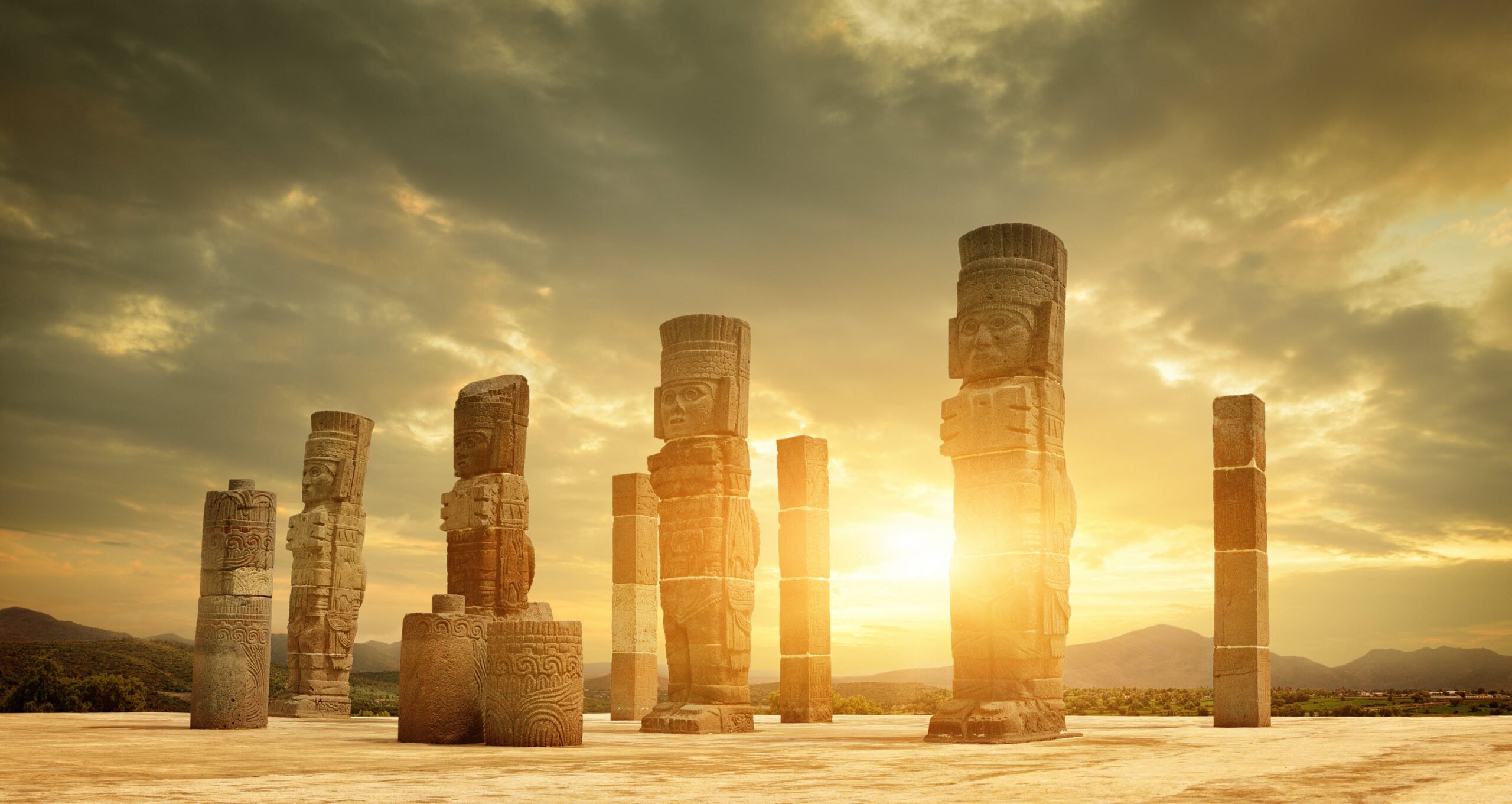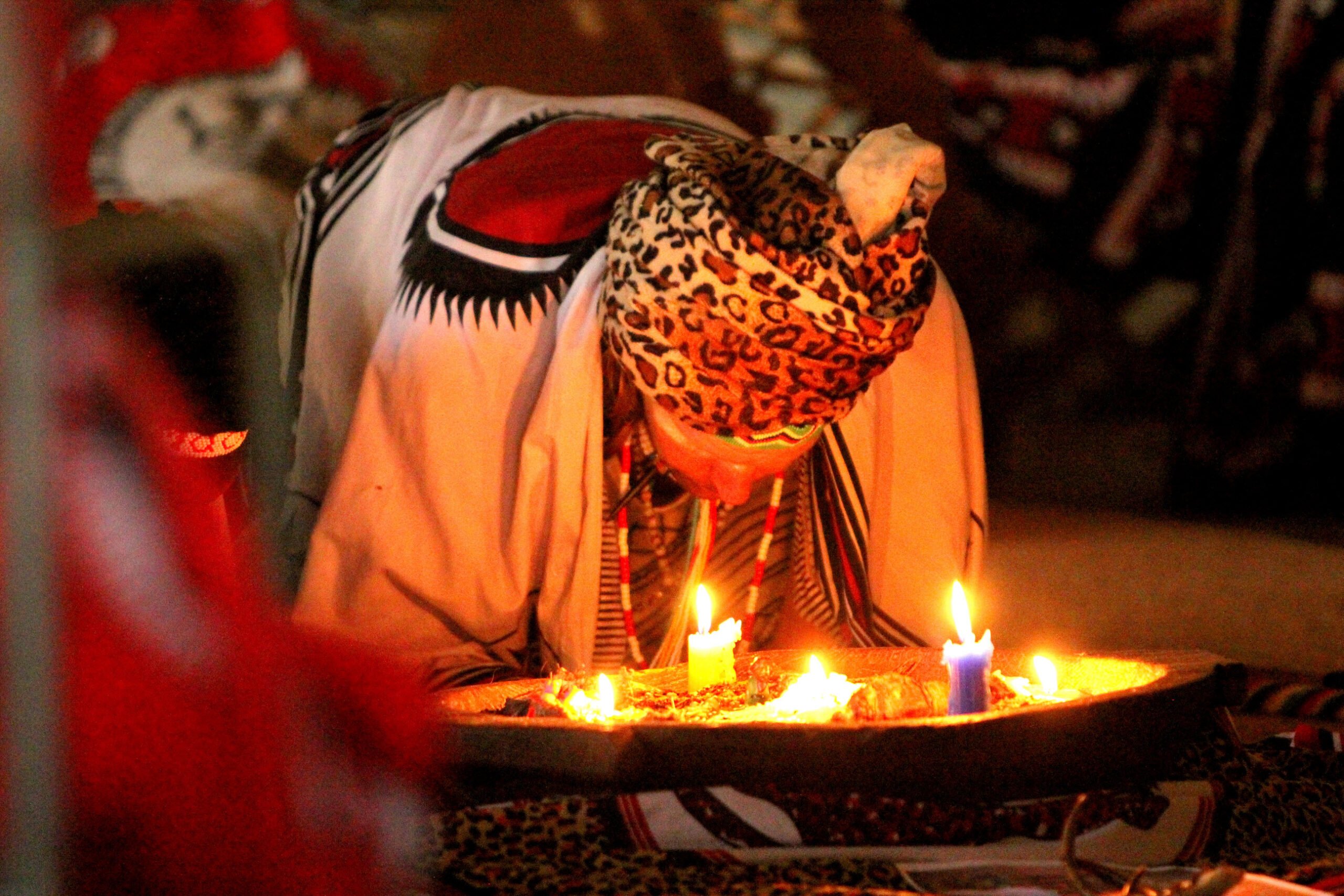keepers of spiritual knowledge and practices of the ancient masters
Our first recorded glimpse of what was to become known a shamanic practice, accessing the spiritual knowledge of all ages, labelled shamans (men) and shamankas (female) by anthropologists to define the role of the spiritual leaders and keepers of the knowledge in the 1400s in Siberia and Mongolia.
The word ‘shaman’: The root of the word means ‘to know‘ and may originate from ‘šamán‘, most likely from the Tungus language of Mongolia. The word was thought to be brought to the west in the 17th century by the Dutch traveller Nicolaas Witsen, who recounted his experiences with the Tungus-speaking people of Siberia in a book Noord en Oost Tartaryen, which was published in several languages.
Don Miguel Ruiz is one such modern shaman, who shares the ‘Toltec Spirit’ of the ancients, and the Toltecs of today, our modern shamans, are still spiritual warriors…
A modern movement led by writer Miguel Ruiz is called ‘Toltec Spirit’. In his famous book The Four Agreements, Ruiz outlines a plan for creating happiness in your life. Ruiz’s philosophy states that you should be diligent and principled in your personal life and try not to worry about things you cannot change.

No one knows why the Toltec culture disappeared sometime in the 12th century and, other than the name ‘Toltec’, this modern-day philosophy has absolutely nothing to do with the ancient Toltec civilisation.
From the Mastery of Love, by Miguel Ruiz:
“Thousands of years ago, the Toltec were known throughout southern Mexico as “women and men of knowledge.” Anthropologists have spoken of the Toltec as a nation or a race, but in fact, the Toltec were scientists and artists who formed a society to explore and conserve the spiritual knowledge and practices of the ancient ones. They came together as masters (Naguals) and students at Teotihuacan, the ancient city of pyramids outside Mexico City, known as the place where ‘Man becomes God.’
“Over the millennia, the Naguals were forced to conceal the ancestral wisdom and maintain its existence in obscurity. European conquest, coupled with rampant misuse of power by a few of the apprentices, made it necessary to shield the knowledge from those who were not prepared to use it wisely or who might intentionally misuse it for personal gain.
“Fortunately, the esoteric Toltec knowledge was embodied and passed on through generations by different lineages of Naguals. Though it remained veiled in secrecy for hundreds of years, ancient prophecies foretold the coming of an age when it would be necessary to return the wisdom to the people. Now, Don Miguel Ruiz, a Nagual from the Eagle Knight lineage, has been guided to share with us the powerful teachings of the Toltec.
“Toltec knowledge arises from the same essential unity of truth as all the sacred esoteric traditions found around the world. Though it is not a religion, it honours all the spiritual masters who have taught on the earth. While it does embrace spirit, it is most accurately described as a way of life, distinguished by the ready accessibility of happiness and love
The Toltecs of today:
The greatest artistry of the ancient Toltecs was their spiritual realisation. There is much evidence in Tula, Teotihuacán and other cities of ancient Mexico, that the people who lived there experienced and shared deep spiritual truths. The questions they explored about their place in the universe and life beyond death, were the same ones asked by humans throughout history. Those questions are still being asked – and answered – on the Toltec path today.
The Toltec of today is a Spiritual Warrior, who uses the tools of stalking, dreaming, recapitulation, and many others from the ancients, to break the bonds of cultural programming, and the quest for freedom.
To become a Toltec Spiritual Warrior and free yourself from the human conditioning of your culture is the greatest gift you could give yourself. It is an opportunity to let go of suffering and embrace happiness and this happiness is considered a gift to all of creation.
The Spiritual Warrior seeks a spiritual life, lived in awareness of the connection with a universal force greater than any one human existence, recognises all parts of the universe as perfect manifestations of that force and sees the unity of creation as one living being.
The Toltec Warrior sees life as a work of art; the being, the artist. The Toltec Warrior knows that every thought, word and action carves the manifestation of reality. These tools are refined as the Spiritual Warrior becomes impeccable with their words and actions and the Spiritual Warrior of today seeks complete freedom from fear and surrenders to love and acceptance.
Influential Shamans of the World
Bhola Nath Banstola, a 27th generation shaman, was born in l966 in the Bhojpur district of east Nepal. He was initiated into traditional Nepalese shamanism (jhankri) at a very young age by his grandfather. He holds a degree in cultural anthropology from the University of New Delhi and has spent long periods with the shamans of the Himalayas, reworking the shamanic techniques that allow him to be a bridge between his ancient culture and the modern world.
Bhola is committed to preserving and spreading the ancient tradition through his writing, workshops, teleconferences and videos. He takes part in international conferences and gives courses in Europe, North America and Nepal. Bhola’s life is dedicated to the research, teaching and preservation of the Himalayan shamanic tradition including herbal and ethno-medicines which have been used through ages.
With his wife, Mariarosa (Mimi) Genitrini, Bhola founded Nepal Shaman, a cultural association created to promote the preservation and expansion of traditional shamanic practices. His ability to connect between the traditional and modern world views, has enabled him to introduce his fellow-shaman-jhankris to the outside world.
Anja Normann has a deep love for people and believes she is predestined and has incarnated on this earth to guide others on their life path.
She belongs to the genealogic family of Sejdkvinnor – women who were were healers and keepers of ancient wisdom. Their connection with the universe, with Mother Earth, has ensured that they retrieved knowledge that once was lost.
She practises a form of shamanic art that was inborn through her family line and has been offering spiritual guidance since 1991. All sessions and workshops are delivered in a lucid state of consciousness, by respecting spiritual laws.
Aya Ayangat is from the Chonos people in Mongolia, one of the most ancient Mongolian tribes, which can be found in Kalmykia, Buryatia and the Irkutskaya province in the Russian Federation.
The name of the tribe translates as ‘wolves’ and it is famous for being the first tribe to join up with Genghis Khan. Mongolian shamanism is centred on the veneration of the Tngri (gods) and the highest Tenger (‘God of the Heavens’), also called Qormusta Tengri. In the Mongolian folk religion, Genghis Khan is considered one of the embodiments, if not the main embodiment, of the supreme Tenger.
The Mongols believed in the spiritual powers of divine beings and sacred locations. Supreme amongst the gods, although they were likely not envisaged as having any human-like form, were the powers of Heaven and Earth. The Earth or Mother Earth goddess, known as Etugen (also Itugen), represented fertility.
Ayangat, along with her son, the youngest Shaman initiate in Mongolia, actively practise an age-old form of Mongolian Shamanic living, healing and connectedness. “If indigenous heritage is destroyed,” she maintains, “the ecosystem will not be able to sustain itself. Current mainstream culture is unable to see the value of the indigenous lifestyle and its heritage. Our vivid earth needs diverse cultures to sustain its brilliance.” She emphasises the importance of maintaining a close connection with Mother Earth.
Ayangat is the spiritual leader and the Head Shaman, for the Mongolian Tenger Unen Association for Shamans.
Shaman Chinbayar was born in Zuun Khara, Ulan Baatar in the year 2000 and has dedicated his life to protecting Mother Earth and to bringing into balance the demands of the unseen spiritual realm and the needs of the country and the families who inhabit it.
Having suffered a mysterious illness at the age of five, Chinbayar’s visit with a shaman alerted his family to his vocation and he was approached by many shamans, demanding that he embrace his calling as Shaman of the Earth and Heavens and honour the legacy of his ancestors.
With ancestral traditions being lost in a consumer society, the young shaman set out to appease the spirits and reconcile modern thinking with the traditional foundation of his homeland.
The arrival of mining companies caused a major upheaval in Mongolia and Chinbayar wants to resolve his own dilemma in this respect: His father also digs the land in search of gold to support his family but, in Mongolia, the ground is home to the gods and nature spirits and should not be disturbed, lest a catastrophe befall the family. Chinbayar hopes that his encounters with lamas and shaman elders will provide him with the answers to find the right path.
John Lockley is a Modern South African Shaman

John Lockley: According to John’s Xhosa elders he is one of the first white men, in recent history, to become a fully initiated Sangoma in the Xhosa lineage of South Africa. His journey is about reconciliation and part of his job is to help heal the past. When people are more connected with their own spirits, there is less of a desire to destroy or put down another. It is not his intention to bring Xhosa or South African shamanic culture to the west as such, but rather to use its essence – the techniques of prayer, dream work and connection to nature – to help people connect with their own ancestors and spiritual traditions.
John was born, in 1971, into a divided apartheid South Africa, with the mark of the sangoma on his face – a band of white birth skin around the eyes. At 18, John was serving in the South African army as a medic (during the war with Angola in the 1980s) when he had a strong, prophetic dream calling him to train as a Xhosa sangoma. He immediately began to suffer from the thwasa, a severe period of ill-health that is inherent in all ancient shamanic cultures, which can only be cured through apprenticeship to a shamanic teacher. Because of the restrictions of apartheid (which ended in 1994) it would take John seven years to find a Xhosa teacher.
During the early days of his calling he trained as a Zen student under renowned Zen Master, Su Bong, completing an intensive three-month kyol che in a Buddhist monastery in South Korea. He was then invited by the Grand Master Dae Soen Sa Nim to join his ‘monk army’, but the strength of his sangoma calling drew him back to South Africa.
Eventually, post-apartheid, John met MaMngwevu, a well-known Xhosa sangoma medicine woman, in one of the poorest townships in South Africa. She had foreseen his arrival in a dream and began his 10-year apprenticeship, giving him the initiated name Ucingolwendaba, meaning messenger or connector between people and cultures. John now splits his time between South Africa, Europe and the U.S.
For the last 12 years he has been facilitating ‘Ubuntu’ (Humanity) and ‘Way of the Leopard’ retreats worldwide, teaching people how they can reconnect to their Ancestors, Spirit and the Earth. John’s passion is teaching people indigenous African medicine to help them reconnect to the Earth. He facilitates this through his ‘Dreams & Tracking’ retreats in the Kalahari Desert every year and his retreats at the Buddhist Retreat Centre in Ixopo, South Africa. John’s book ‘Leopard Warrior’ and audio teaching course ‘Way of the Leopard’ are both produced by Sounds True and available in leading bookstores, Amazon and Kindle.



